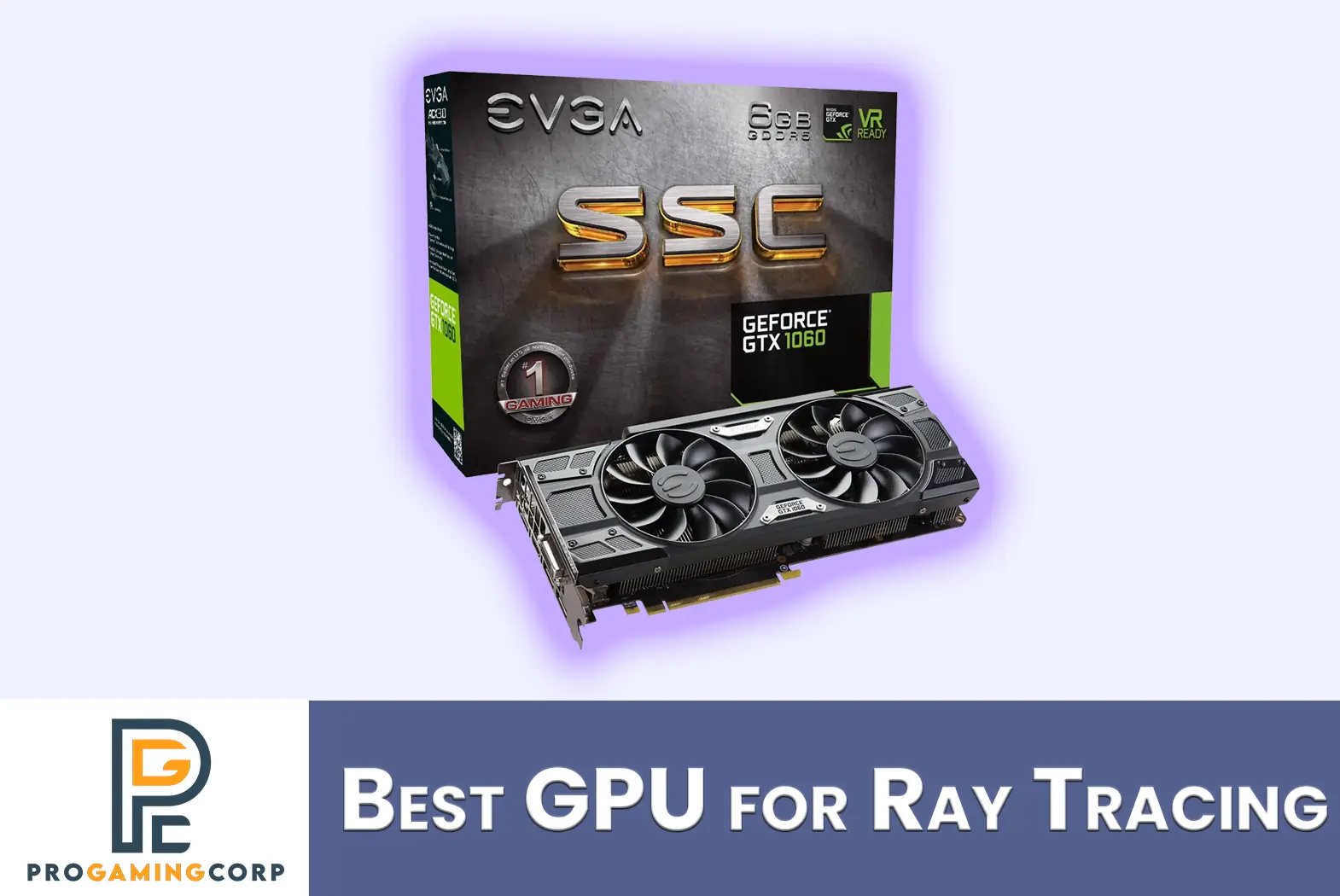Ray tracing is an advanced graphics rendering technique that simulates real-world lighting and reflections to create ultra-realistic visuals in games and applications. To enjoy the benefits of ray tracing, you need a powerful graphics card or GPU built for this demanding task.
In this comprehensive guide, we will discuss everything you need to know about getting the best GPU for ray tracing.
Contents
What is Ray Tracing and Why it Matters
Ray tracing simulates how light rays interact with objects in a scene. It accurately traces the path of light as pixels on the screen. This gives ray tracing the ability to deliver true-to-life shadows, reflections, refractions and global illumination in real-time graphics.
Without ray tracing, traditional rendering uses “tricks” to approximate lighting effects. This leads to unrealistic and fake-looking visuals with muted colors and lighting. Ray tracing completely changes this by calculating proper light physics and material interactions.
In games, ray tracing can transform the visual experience. Environments look vibrant, vivid and three-dimensional. Lighting becomes dynamic and nuanced. You see life-like shadows and reflections based on light source positions. Rain, smoke, fire and other particle effects look amazingly realistic.
Ray tracing also has important use-cases in 3D modeling, CAD applications, content creation, machine learning and more. Overall, it takes graphics, simulation and immersion to the next level.
How Ray Tracing Works
The basic principle behind ray tracing is that for each pixel rendered on the screen, one or more light rays are traced back to their origin. This accurately simulates how light interacts with surfaces in the virtual environment.
There are three main components of a ray tracing system:
- The ray generation shader programs shoot out light rays for each screen pixel.
- The intersection shader checks collisions of rays with scene geometry and materials.
- The shading shader calculates lighting and color values after ray-surface interactions.
Additional shader programs add shadows, reflections, ambient occlusion and other effects. Advanced ray tracing also utilizes AI and machine learning techniques.
The entire pipeline runs in parallel on the GPU for real-time performance. But it requires tremendous computing power and VRAM for acceptable frame rates.
Factors to Consider for the Best Ray Tracing GPU
Ray tracing places heavy demands on the graphics card. To enjoy smooth performance, you need to choose a GPU tailored for this workload. Here are the key factors to consider:
Dedicated Ray Tracing (RT) Cores
Specialized RT cores accelerate ray tracing and light calculations on the GPU. They are present on Nvidia RTX cards and AMD RDNA2/3 RX cards. More RT cores deliver better ray tracing performance.
High Clock Speeds
Higher GPU clock speeds increase shader program performance for ray tracing. A boost clock over 2 GHz is recommended for smooth frame rates.
Plenty of VRAM
Ray tracing uses a lot of video memory for storing scene data and light information. Aim for at least 8 GB of VRAM, with 10 GB or 12 GB being ideal.
Latest GPU Architecture
Newer GPU designs like Nvidia Ada Lovelace and AMD RDNA3 have hardware and software enhancements for ray tracing. They are much faster than previous generations.
DLSS 3 and FSR Support
DLSS 3 and FSR use advanced upscaling and anti-aliasing with AI acceleration to boost frame rates. This compensates for the performance hit of enabling ray tracing.
The Best GPUs for Ray Tracing
Based on the above factors, these are the top graphics card recommendations right now for ray tracing:
Nvidia GeForce RTX 4090 – The Ultimate Ray Tracing GPU
The freshly launched RTX 4090 is in a league of its own for ray tracing performance. It has a whopping 128 RT cores and can hit over 130 FPS with ray tracing enabled at 4K resolution.
With up to 24 GB VRAM, Ada Lovelace architecture, DLSS 3 and insane compute power, the RTX 4090 is unmatched for ray tracing fidelity and speed.
AMD Radeon RX 7900 XTX – Powerful RDNA3 Ray Tracing
AMD’s new flagship RX 7900 XTX packs 96 improved ray accelerators and goes toe-to-toe with the RTX 4090. It delivers buttery smooth ray traced visuals at 4K. The card also has plenty of VRAM at 20 GB.
RDNA3 ray tracing enhancements, excellent 4K gaming performance and lower price make the 7900 XTX a great choice.
Nvidia RTX 3080 Ti – Previous Gen Flagship RTX
Although superseded by RTX 4000 models, the RTX 3080 Ti still impresses with its ray tracing capabilities. It has 104 second-gen RT cores and 12 GB GDDR6X VRAM.
With support for DLSS 2, PCIe Gen 4 and a 320-bit memory bus, the 3080 Ti runs ray traced games at 4K smoothly.
AMD Radeon RX 6900 XT – Great RDNA2 Ray Tracing Value
The RX 6900 XT deserves a mention for bringing ray tracing to AMD GPUs. It has 80 ray accelerators and 16 GB VRAM for solid ray tracing performance.
While not as fast as Nvidia RTX cards, the 6900 XT is great value today for entry-level 4K ray tracing.
Nvidia RTX 3060 Ti – Budget Ray Tracing Pick
In Nvidia’s mainstream RTX line-up, the RTX 3060 Ti stands out. It comes with 38 RT cores and 8 GB GDDR6 VRAM.
For 1080p or 1440p gaming, the 3060 Ti can run ray traced titles at 60+ FPS when paired with a good CPU.
People Also Ask
Does ray tracing reduce FPS?
Yes, enabling ray tracing can significantly reduce FPS. The performance hit can be 30-50% in some games. This is because ray tracing involves complex lighting and graphical calculations. Using DLSS or FSR helps regain lost frame rates.
Can GTX cards do ray tracing?
No, only RTX (Nvidia) and RX (AMD) graphics cards support real-time ray tracing due to their dedicated hardware and drivers.
Is ray tracing worth it?
Absolutely – ray tracing makes lighting, reflections and shadows incredibly realistic. More games are releasing with ray tracing support. Powerful GPUs like the RTX 4090 can now run ray tracing smoothly.
Does AMD or Nvidia do ray tracing better?
Nvidia currently has superior ray tracing performance compared to AMD. However, AMD’s RDNA3 cards have narrowed the gap significantly. Overall, both vendors will continue improving ray tracing quality and speeds.
Conclusion
Ray tracing is transforming modern gaming visuals with true-to-life lighting. To enjoy ray traced games, you need a powerful GPU like Nvidia’s RTX 4090 or AMD’s RX 7900 XTX. Consider the RT cores, VRAM, clock speeds and architecture while choosing the ideal ray tracing graphics card for your budget.
With rapid advances from Nvidia, AMD and Intel, ray tracing performance and adoption will only grow and beyond. The realistic visual payoff is worth the investment into a good ray tracing GPU

